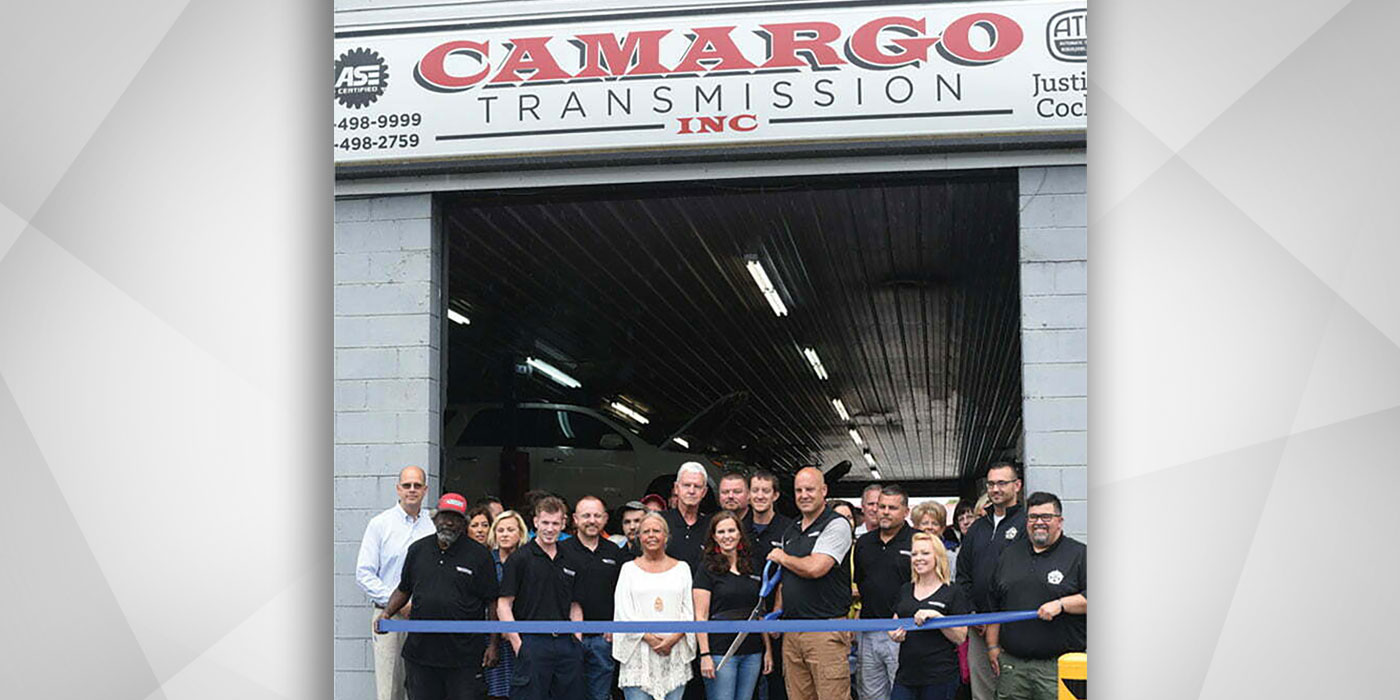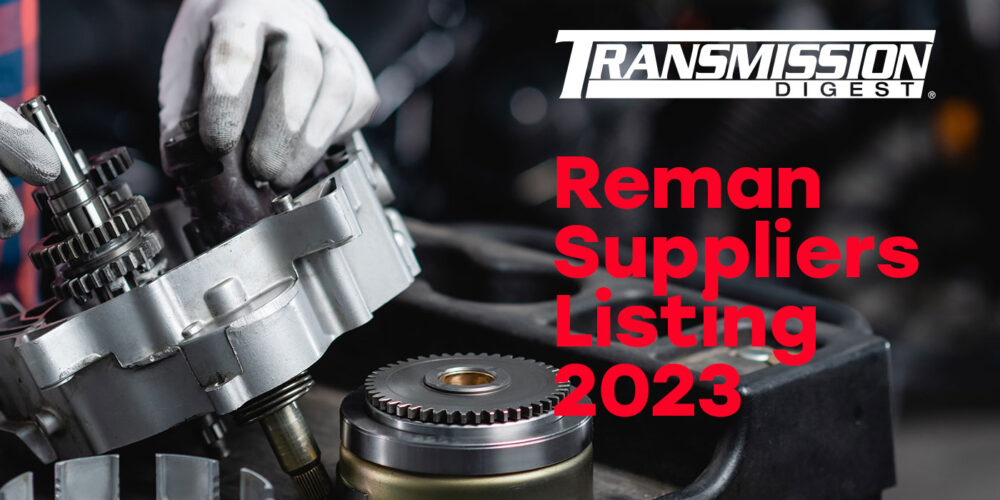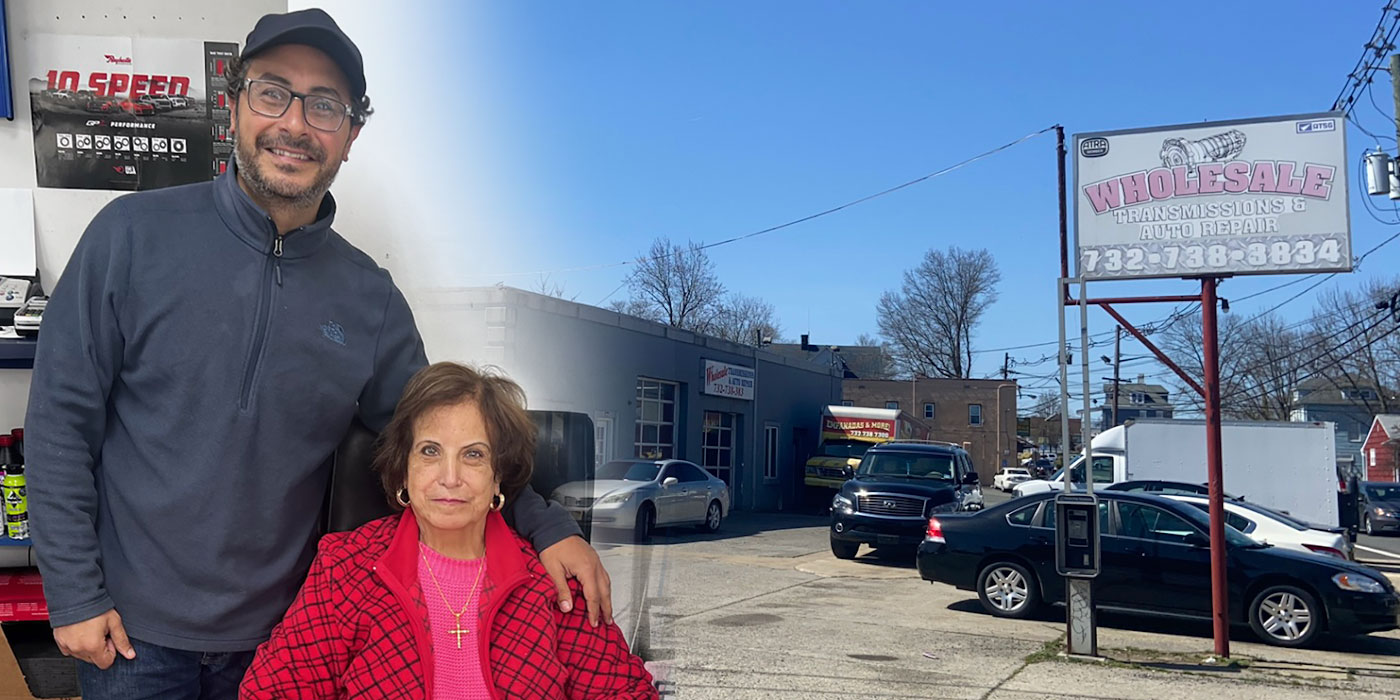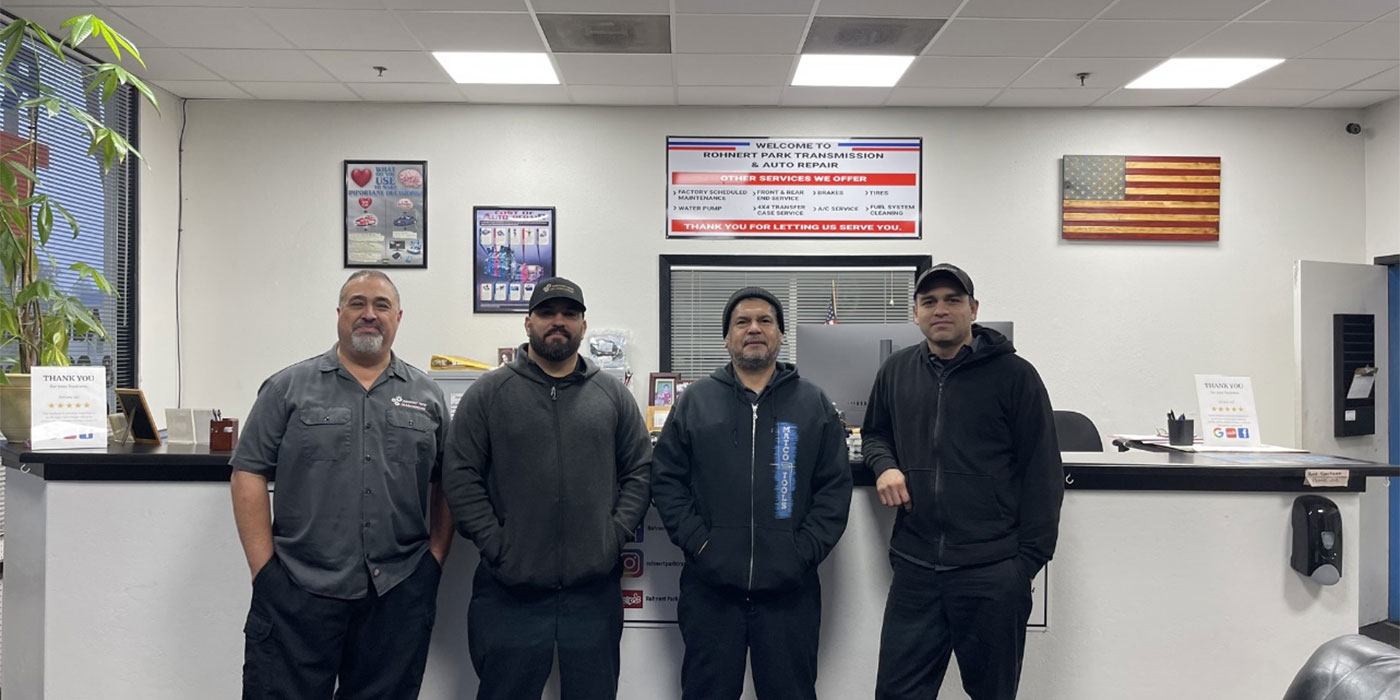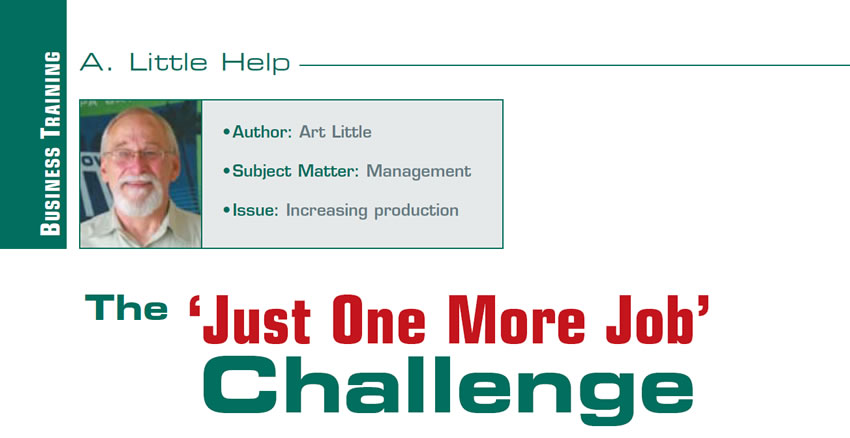
A. Little Help
- Author: Art Little
- Subject Matter: Management
- Issue: Increasing production
Have you gotten used to losing? I hate to say it, but some transmission-shop owners have. They pretty much have given up. All that keeps them from dying is not lying down.
They are used to employees taking advantage of their good nature. It is normal for them to not know how many leads the shop averages each week. You could put a gun to their head and they could not tell you where their leads came from or the result of each one. Work in progress is a total mystery. They have delegated that to their manager and he is the only one who can understand his system. These shop owners do not require production reports from their employees – not important. They learn their parts cost when they close one eye and lean back to read the bill from the vendor. This “tail is wagging the dog” group finds out whether they made any money when the accountant gives them their P&L statement. They are constantly one step behind the money. It is gone by the time they find out about it.
That is a miserable way to make a living, and the end result is another transmission shop going out of business. In this article, I am giving you guys a wake-up call to tell you your shop is on fire, issuing a challenge to you and giving you the management tools and techniques you need to be a successful owner/leader in your shop.
I am challenging all transmission-shop owners across the country to increase production by “just one more job” a week and put an extra $104,000 in your pocket each year. There is a simple formula to success. If your shop’s average ticket is $2,000 for a transmission job and you can learn to be more efficient and increase production by one job a week, you can increase your revenue by $104,000 ($2,000 x 52). The challenge is to increase production by just one job a week – simple goal, big results. Now, this is “extra money” on top of what you are making now. That is when the shop owner makes his profit. That is a “special time” when one more job puts the most money in your pocket. Everybody else’s pockets get filled before the shop owner’s. This is your time, and you must make the most of it.

Whether you are making just enough money to pay the bills or are losing money and need to stop the bleeding, let’s put an additional hundred grand on top of what you are making now by making your shop more efficient and productive, and see how the world looks then. Sound like a pipe dream? Not really. In my consulting business, we accomplish this goal on a regular basis. Let me tell you how it works. It involves helping make the shop more efficient and productive so it can get “just one more job” through the production system. That’s all. That becomes our mission. That plan immediately puts extra money in the bank and gives our clients a stronger foundation for the future. All shops are different. Each shop has its own strengths and weaknesses. The key is to put together a plan that fits your shop.
The first part is the evaluation. I try to find ways to increase productivity in the shop by first looking at and evaluating the current production system and the people working in the system. I like to watch the shop operate the first week. I do not get involved; I am an observer. I take notes on productivity issues I see. There are evaluation forms that I have the shop owner and each employee fill out before we start the week. I use that information to figure shop capacity. I want to know what this group of guys is currently producing, which gives us a starting point, and what they are capable of producing, which gives us a goal.
Once I have completed my evaluation, I put together a specific plan that will increase production and I set a goal to increase production by at least one job a week. I am not trying to hit a home run and double production. I set a realistic goal that can be accomplished pretty quickly if everybody buys into the new plan. Once we achieve a one-job increase in productivity, we set a goal for “just one more” and put together a plan to achieve it.
Some of my recommendations in a typical shop might look something like this:
Team Goals
We will produce one more job a week. As a team, we need to focus on improving our turnaround time without compromising quality. The manager will have a production meeting every morning before work and set production goals for the day. Technicians will take work assignments in the order the manager lays out for them. We will make sales our No. 1 priority. Everyone will do whatever it takes to support the manager in sales. We will get the initial diagnostics performed for him within one hour of the vehicle’s arrival.
No pre-closing. We will work on our assignments until closing time and then shut the shop down. Road tests are no longer than 15 minutes. No personal time off for 30 days. Keep the shop clean.
Organize the parking lot. Set up a designated parking area closer to the shop for work in progress. Set up separate parking areas for diagnostics, warranty, abandoned vehicles and vehicles for sale so we can see what is what on the lot.
Work smart. Communication all day long among employees helps us reach our team goals.

Individual Goals
The shop owner must make sure his advertising is getting the maximum results for the money spent. If you take a second look at your advertising strategy, you might find that things have changed and come up with a new strategy that will find that one more job. Get a second opinion from an online advertising specialist, who can evaluate your current plan and advise you on how to get more leads into the shop.
The manager must start recording every lead so the shop has an accurate, current lead count. He must focus on his telephone procedure to try to get that one more job in. Start calling back customers who did not show up for their appointments. Order parts as soon as a job is sold to keep them coming on time. Make sure there are no production gaps by planning production ahead of time and keeping everyone busy. Make sure the customers will pick up the vehicles you are working on this week. Shop three vendors on every parts order and save up to 25% off the parts bill.
The builder must focus on time management. Maybe we start by not disturbing the builder without a good reason. Managers, owners and installers cannot just walk into the rebuilding room anytime and start talking to him. Managers cannot pull him off every time there is a “heat” case up front. Delegate time needed to perform road-test diagnostics to others and have them report their findings to the builder. Everyone needs to help him stay at the bench as much as possible so he can build that one more job.
The diagnostician must facilitate sales. We cannot sell anything until we get it diagnosed. The external diagnosis must be started within 30 minutes of the vehicle’s arrival and should be completed in no more than 30 minutes. If the diagnosis cannot be completed in 30 minutes, report to the manager and let the manager decide whether to proceed or call the customer and sell extra diagnostic time. That will get an external diagnosis done on each vehicle within an hour. Be ready to take in and diagnose new work in a timely fashion. Try to keep one lift free at all times for new leads. We will diagnose a walk-in customer’s vehicle while he waits to pick up that extra job.
The installer must stay busy and get started on every removal or installation as soon as it is available. If he is not removing or installing a transmission, he can help the builder wash parts, help the diagnostician by clearing a lift or answer the phone when the manager is on a road test. He is the get-it-done guy in the shop. Making sure his work is done and helping teammates when he is idle may get that additional job we are looking for.
Once the new production plan is finished, we have a meeting and I lay out the new plan for everyone. When the meeting is over, each team member knows the shop’s goal and what they need to do to help get that one more job. I just oversee it to make sure everybody is following the new plan and give them reports on their progress. I like to have a one-on-one meeting with each employee and then a group meeting once a week to discuss the results and make adjustments. That process seems to keep everyone focused. You cannot make a new production plan, then go home and watch TV. You have to stay on top of it.
You can’t do it by yourself. It takes a good plan, a good team and a good leader. I want to give you a little help (no pun intended) and make it easy for you to accept the challenge. This month, I am offering free production evaluations for your shop at the TransTeam website. Go to http://www.transteam.com and request the evaluation form, and we will mail it to you. The evaluation questions are designed to give us basic production information about your shop. You should be able to complete the form in about 15 minutes. Once you complete the evaluation, TransTeam will take your information and determine your current capacity. Then, we will take a “second look” at your shop, create a custom plan that will immediately increase production by at least one job a week and email it to you. As an extra bonus, we will also evaluate your current parts costs and determine how much you can save on future purchases. I want you to be an informed and prepared owner/team leader, and this plan will get the ball rolling for you.
With your new plan in hand, you will know your current production capacity and also have a plan for increasing future capacity. Now you are prepared to have a meeting with your team and present the new plan. Be sure to let them be part of the process and ask whether they have other ideas that might help. It has been my experience that once you set a clear goal for technicians and involve them in making the rules, they work hard to stay within the rules and you have a better chance at achieving the goal.
Get them to take the challenge by making it like a game. Maybe offer a bonus if they reach the goal as a team, and then start thinking about how you will spend that extra money. $104,000 is not pocket change. Behind on your parts bill? A new productivity plan would dig you out of that mess. Want to go to the trade show in Vegas? How about getting all greedy and putting a nice boat in the water for yourself? Or, if you are in trouble with Mama, put a new car in her parking space. Think about how it is now and how it can be with a little help. If you are tired of losing being the norm around your shop, what are you waiting for? Get a little help and take the “just one more job” challenge now!

Art Little is the founder of TransTeam. www.TransTeam.com




